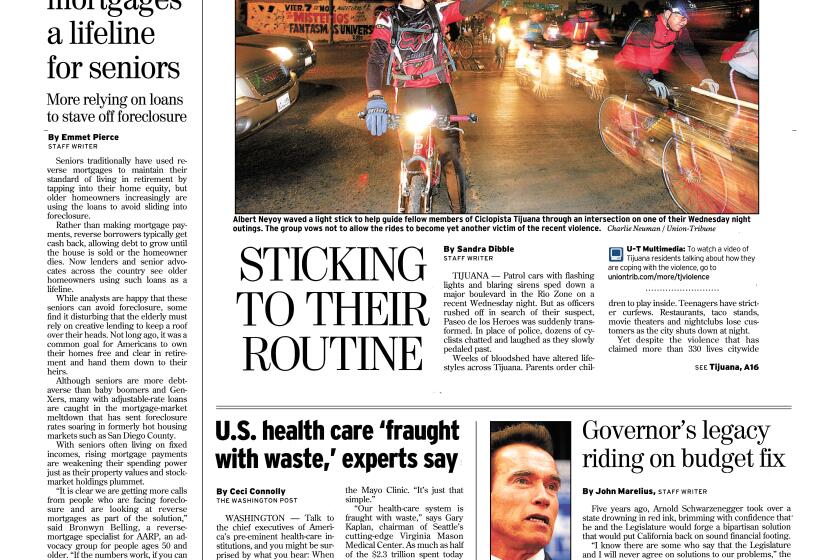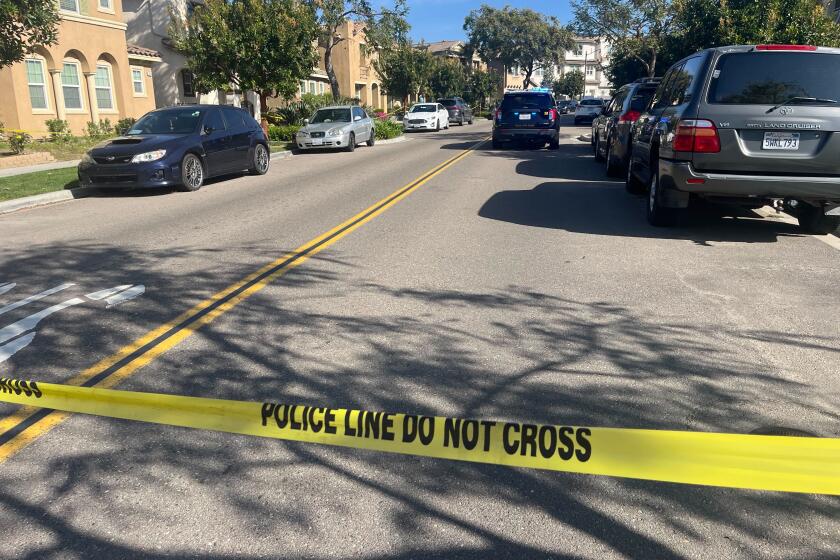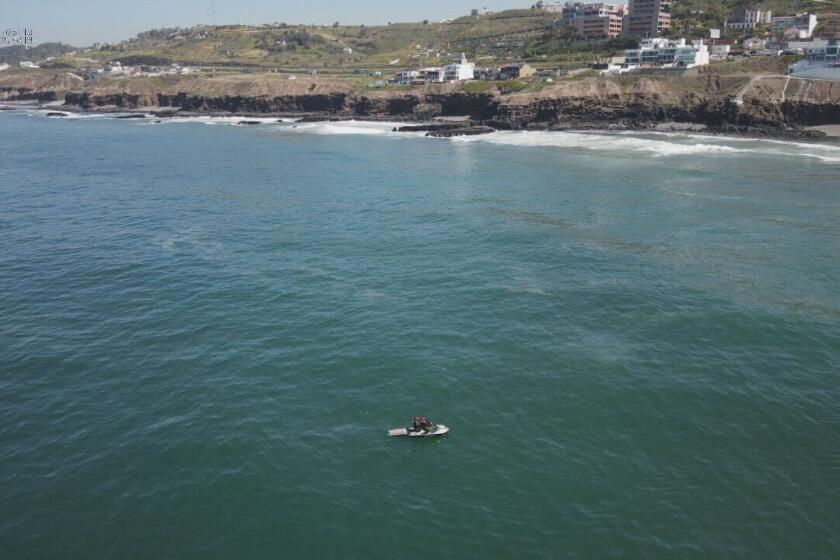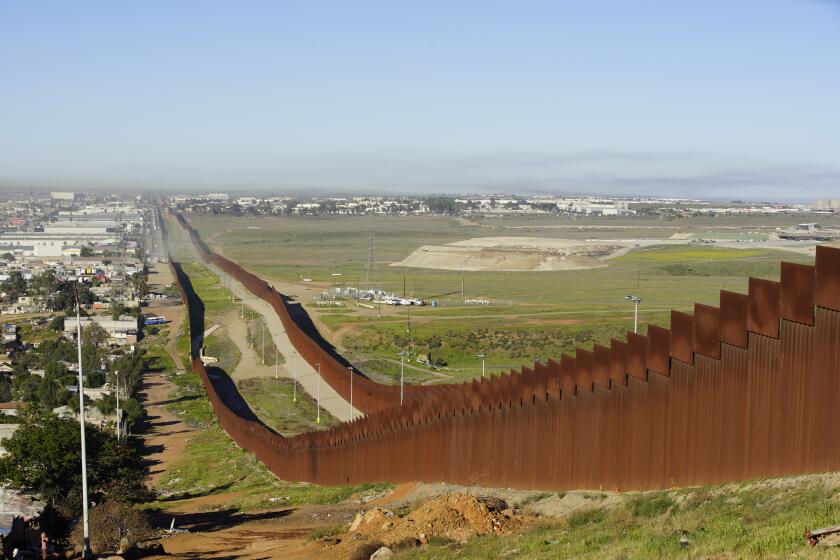Accord aims to clean up Tijuana River watershed
Problems of sediment, trash and polluted stormwater flowing from Tijuana to San Diego have plagued the westernmost end of the U.S.-Mexico border for decades. Now, an unprecedented agreement between the United States and Mexico brings renewed focus to these issues, enlisting agencies and environmental groups on both sides in a joint search for solutions.
The accord, known as Minute 320, puts the spotlight on the Tijuana River watershed, a 1,735-square-mile area that straddles the two countries, with 70 percent of the area in Mexico. It takes a binational approach to addressing persistent problems such as waste tires that wash downstream from Tijuana’s colonias and the accumulation of sediment that smothers a federally protected salt marsh habitat at the Tijuana River National Estuarine Reserve in Imperial Beach.
Damage from the pollution is wide-ranging, affecting birding habitat, tidal channels, beach water quality and the health of people who live along or near the waterway.
“This is a basin that we share. No matter if the border exists, it’s there, and we have to see how we can collaborate with each other,” said Roberto Salmón, head of Mexico’s Comisión Internacional de Límites y Aguas, the federal agency responsible for negotiating the agreement with its counterpart, the U.S. International Boundary and Water Commission.
The minute falls under the 1944 U.S.-Mexico water treaty, which addresses three shared watersheds. Until now, the two federal governments have focused most of their attention on issues involving the far larger Colorado River and the Rio Grande basins. But the Tijuana River watershed is also part of the pact.
Minutes are decisions of the commission that implement the 1944 treaty. The previous binational agreement, Minute 319, signed in Coronado in November 2012, was hailed as a landmark agreement committing the U.S. and Mexican governments to jointly working on a series of issues concerning the Colorado River until 2017. Salmón said this week’s Tijuana River basin agreement aims to maintain the same spirit of cooperation.
The result of talks that stretched out over three years, Minute 320 is a “framework agreement” that sets up a structure for collaboration but does not dictate a timeline for the efforts. It also doesn’t identify any targeted programs or funding sources. U.S. Commissioner Edward Drusina said the intention is for the accord to spawn subsequent minutes that would address specifics.
“This is the engine,” Drusina said. “Now we’ve got to put all of the pieces into this vehicle to move it forward.”
Success will depend largely on local participation, Drusina said. “Certainly the federal government will have to play a role, but those of you who work and live in this region have to find the determination to find the solutions,” he said.
Minute 320 calls for the establishment of a “Binational Core Group”, which would include representatives of the commission; members of federal, state and local government agencies; and representatives of non-governmental organizations. The group will oversee smaller committees entrusted with looking into a range of issues such as flood control, deposits of sediment and solid waste, wastewater discharges, climate change and civic participation.
“The commissioners ... agreed that the greatest priorities in the Tijuana River basin are to improve sediment control, solid waste management and disposal and water quality,” according to the minute’s wording.
The agreement aims to build on longtime efforts to clean up the Tijuana River watershed.
Joint U.S.-Mexico programs to improve wastewater collection and treatment in Tijuana date to the 1990s. They include $240 million in funding from the U.S. Environmental Protection Agency for the construction of an international wastewater treatment plant in San Diego that treats 25 million gallons daily.
The two countries have also been partnering under the Border 2020 and Border Water Infrastructure programs. The EPA is funding a river restoration project in Tijuana by the Mexican nonprofit group Pronatura Noroeste. Another nonprofit, Proyecto Fronterizo de Educación Ambiental, received a Border 2020 grant to implement a program that certifies restaurants for being “plastic-free.”
“Conditions have definitely gotten better in the last five to seven years,” said Chris Peregrin of the Tijuana River National Estuarine Research Reserve. “Part of the reason for that is that the city of Tijuana has been building sediment basins and the state of California has built a large sediment basin.”
Minute 320 offers the possibility of more structure and coordination of efforts, said Laura Silvan, board chair of Proyecto Fronterizo, who attended its signing ceremony. “Now there is something that says that stuff has to get done.”
Also witnessing the signing was David Gibson, executive officer of the San Diego Regional Water Quality Control Board, which lists cleaning up sediment and trash in the Tijuana River watershed as one of highest priorities. “These are enormous issues of great importance for the water board to address in this river valley,” Gibson said.
He said the accord will bring resources to reducing sediment and trash in the watershed. Minute 320 can elevate those issues and help efforts to seek funding from organizations such as the North American Development Bank, he said.
Imperial Beach Mayor Serge Dedina, who also attended the ceremony, called the agreement a “historic opportunity to continue to help improve the ecological conditions of the Tijuana River Valley and watershed.”
Dedina, who also heads the Imperial Beach-based environmental group Wildcoast, said “there are very few border systems that have this kind of process.”
sandra.dibble@sduniontribune.com (619) 293-1716 Twitter: @sandradibble
Get Essential San Diego, weekday mornings
Get top headlines from the Union-Tribune in your inbox weekday mornings, including top news, local, sports, business, entertainment and opinion.
You may occasionally receive promotional content from the San Diego Union-Tribune.











